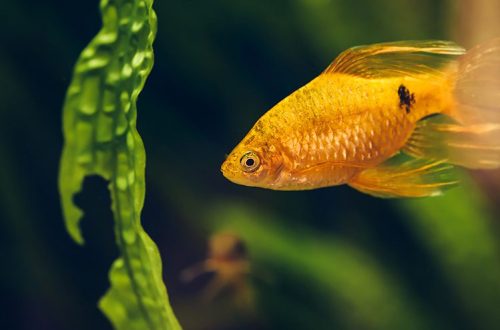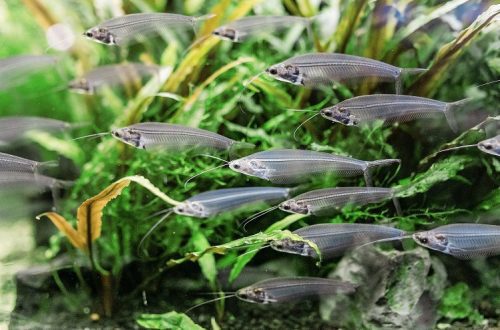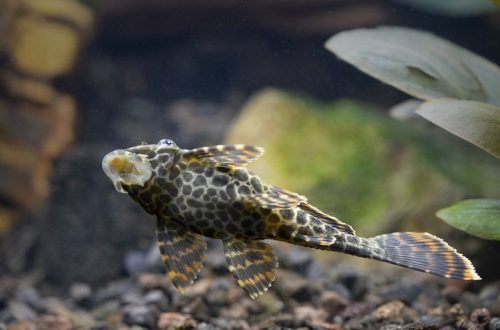
Secrets of clear water
If you have decided to start aquarium fish for the first time, you will inevitably face the question: “How to keep the water and the aquarium clean?”
Many people who seem to want to start a fish refuse this venture, frightened by the difficulties associated with changing the water, cleaning the aquarium, etc. But if you pay enough attention to the issue and note the main points for yourself, caring for the aquarium will be pleasant and completely not a difficult process.
The secret of clear water lies in the proper care of the aquarium and its inhabitants, the balance of fish, plants, bacteria, etc. Speaking of the cleanliness of the aquarium, let’s start from the very beginning, namely, with its preparation for the appearance of the first inhabitants.
Contents
My aquarium
The aquarium is washed in three stages. First, just rinse it with running water until absolutely clean, then rinse it again, but not with water, but with a solution of potassium permanganate or common salt, and then rinse it again with clean running water for the final time.
Making the bottom of the aquarium
To decorate the bottom of the aquarium, it is best to purchase a special aquarium soil sold in pet stores. Inexperienced hobbyists often put ordinary stones in the aquarium, which can subsequently release harmful substances, and this is very dangerous for fish. If you still want to decorate the aquarium with collected pebbles (shells or other elements), rinse them thoroughly, or even boil them, but do not forget that shells can lead to water hardness, and not all types of fish like this.
If you want to use sand as a soil, be sure to sort it out, removing all dirt, pebbles, etc. (you should get clean, uniform sand at the end), rinse it in running water until the water is completely clear, then boil and to fix, rinse again with running water.
At first don’t use clay and peat (used in aquariums with live plants), otherwise it will be very difficult for you to keep the aquarium clean, but don’t worry, you will learn this later.
Never fertilize the soil in the aquarium, there is no need for this if you do not have live plants. Such an experience will not only bring no benefit, but will most likely cause harm to the inhabitants of the aquarium, in the form of an outbreak of unwanted algae (water blooms).
Choosing the right lighting
Fish and plants love light, and your tank should always be in eternal summer. However, exposure to direct sunlight in the aquarium should be avoided, as this can cause water blooms.
Favorable lighting will help create a variety of lamps, the most commonly used fluorescent and LED lamps. Usually they are placed above the aquarium and shine from above, hiding behind reflectors.
As for the power of the lamp, the calculation is as follows: 10-15 watts / bucket of 10 liters of water with a side lamp. If the lamp is located above the aquarium, add another 20% power.
Some aquarists use special underwater lights as decorative lighting.
Do I need to heat the aquarium?
You should always control the temperature in the aquarium, as temperature fluctuations adversely affect the fish. If you notice that the water in your aquarium is getting colder than 18’C, use additional heating.
The optimal temperature for most tropical aquarium fish is 25 C, 21 degrees is enough for goldfish, and discus need temperatures closer to 30. Special aquarium heaters will help you maintain the optimum temperature in the aquarium, most of them are equipped with a special thermostat that turns off the heating when the set temperature is reached. temperature.
Be sure to plant plants in the aquarium
Without plants in the aquarium anywhere! Plants oxygenate the water, some of them are suitable for fish to eat, and plants also help keep the water clean.
For the first time, it is better to use standard, unpretentious plants, such as ceratopteris fern, vallisneria, hygrophila, cabomba, sagittaria, etc. Many, more complex plants, you can only plant on well-established, fertile soil, which it becomes in about 4-5 months after laying.
It is better if the plants in your aquarium are planted in separate groups, i.e. one group = 1 species. So the plants grow much better and it looks much more spectacular than a large number of plants of different species, planted in a chaotic manner around the aquarium.
Place the plants in the aquarium first and only then fill it with water, while first carefully covering the plants with a sheet of paper (or plastic wrap) to soften the pressure of the water, and remove the paper when the aquarium is already full.
Cover the aquarium with a special lid
After you have filled the aquarium with water, cover it with a lid. So you will not let dust get on the surface of the water and prevent the appearance of a cloudy film. It is also very useful in case the fish try to jump out of the aquarium.
Previously, the aquarium was covered with ordinary glass, which was not entirely safe. When feeding fish and changing water, loose glass could easily break. With the help of special covers for the aquarium, these problems can be easily solved – they have holes for air, feeding, wires for aquarium equipment. When changing water, the cover can be folded up, while it will hold on by itself.
Water purity
After you have poured water into the aquarium, you need to let it settle, it will take 3-4 days. And after that, finally, it will be possible to launch fish into the aquarium! If you want to speed up the process, then you need to use special water conditioners (not to be confused with hair and laundry conditioners). You can buy them at any pet store that has an aquarium section.
When you have just poured fresh water into the aquarium, the aquarium seems crystal clear and very beautiful. However, after a couple of days, you will notice that the water becomes more cloudy. Don’t worry, this is normal as the water changes due to the growing bacteria. After a few more days, the water will again become almost transparent and acquire a slightly yellowish tint.
Aquarists call this water “living water”. It already contains organic matter and microscopic inhabitants that quickly destroy excess bacteria. This water is favorable for fish. Unfortunately, seeing cloudy water, many beginners rush to replace it. Now you know that you can’t do this, and don’t repeat this annoying mistake.
In the future, when the aquarium is already populated with new inhabitants, you will have to renew the water about once every 10 days. In no case do not replace the entire water in the aquarium as a whole, only 1/3 of the entire water in the aquarium should be changed.
Correct feeding regimen
The correct feeding regime is the most important component of the cleanliness of your aquarium. Many beginners, unfortunately, overfeed their fish, believing that it is better to overfeed than to leave the pets hungry. In fact, everything is quite the opposite. In nature, fish are often malnourished, so mild malnutrition is normal for them. But uneaten food that will float in the water or lie at the bottom of the aquarium contributes to water pollution and poor health of the fish.
As a rule, we recommend feeding the fish once a day with as much food as the fish will eat in the next 1 minutes. If you see food left uneaten, remove it from the tank if possible. In the future, you will better understand the needs of your fish and develop an optimal feeding regimen.
If you overfeed the fish, the water in the aquarium will become more cloudy, and in case of severe pollution, the fish will float to the top and begin to swallow air. In this case, you need to urgently remove dirt from the bottom of the aquarium and replace a third of the water.
If, due to overfeeding, the water has become cloudy, but the fish have not surfaced, just stop feeding for a couple of days. During this time, the fish will eat the rest of the food and clean the plants from weeds.
We fight with flowering and plaque
If the blooming of the water begins due to excessive lighting, then the lack of lighting can cause another problem – a brown coating of diatoms that covers the walls of the aquarium and plants. Don’t worry, you’ll get over this problem once you get the lighting right.
Also, modern algicide preparations that resist the development of algae, but are absolutely harmless to the rest of the inhabitants of the aquarium, will help with water bloom and algal fouling of glass and decorations.
Does an aquarium need a filter?
Pet stores offer a huge selection of filters for aquariums. If you have a small aquarium with a small number of inhabitants, an internal filter will be enough for you. For aquariums larger than 60 liters with a large number of fish, it is advisable to purchase an external filter, since the volume of filter materials in it is much larger, it is more powerful and can pump a larger volume of water.
Subsequently, gaining experience, you can easily keep the aquarium clean, no matter how many inhabitants live in it.





